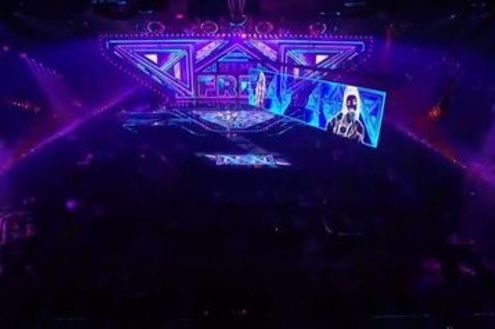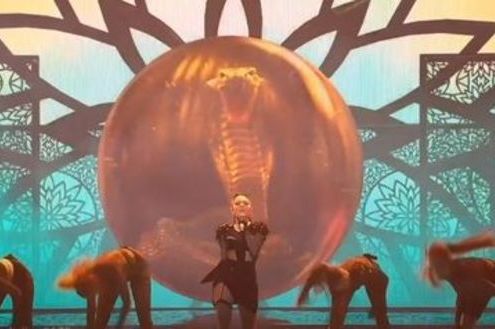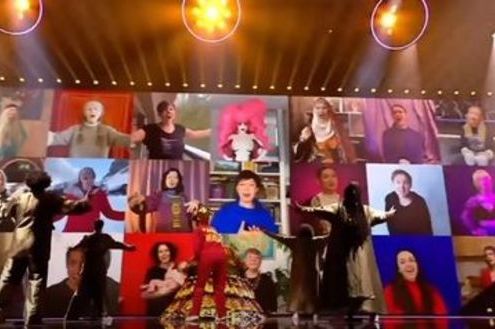Protests continue in Iran. In the past few days they occured in Tehran and other major cities of the country. In some cases, they resulted in clashes between protesters and Iranian police. At the time of this writing, as a result of the confrontation between demonstrators and law enforcement officers, according to official data, 13 people have already died. On the evening of January 1, Iranian IRIB channel reported about the death of a policeman in Najafabad. He was shot by one of the protestors. It should be noted that earlier, the Islamic Revolutionary Guard Corps threatened demonstrators with "iron fist".
Such a turn in Iran's domestic political life and such a sudden escalation became a surprise for many observers, who draw parallels between the current protests and actions of the oppositiona; "Green Movement" of Mir-Hossein Mousavi in 2009. However, unlike demonstrations of 2009, provoked by discontent with the results of presidential elections in the framework of existing state structure, today's protesters, dissatisfied with their economic situation, oppose theocratic regime itself. In other words, it's not an issue of traditional conflict between "reformers" and "conservatives" within the system, but issue of growing dissatisfaction with social and economic situation in the country.
 As Anadolu agency writes, "earlier, participants in these protests invested in more than 6 thousand local companies, which soon went bankrupt. Several million people lost their money. State and government structures didn't pay attention to these protests. Most of protestors are people who lost their money. But this time they were joined by poor citizens and oppositional political groups. Most of bankrupt financial companies were supporters of conservative camp. In this connection, the fate of invested funds remains unknown."
As Anadolu agency writes, "earlier, participants in these protests invested in more than 6 thousand local companies, which soon went bankrupt. Several million people lost their money. State and government structures didn't pay attention to these protests. Most of protestors are people who lost their money. But this time they were joined by poor citizens and oppositional political groups. Most of bankrupt financial companies were supporters of conservative camp. In this connection, the fate of invested funds remains unknown."
In turn, Iranian government says that "foreign agents" played a role in these unrests. Of course, thoughts about foreign enemies, often voiced by Iran, could be regarded as just another political move, designed to consolidate internal forces in the face of an external threat. However, in the context of the new US strategy against Iran, announced by President Donald Trump in October of 2017, agreements between Washington and Tel Aviv, as well as active trilateral cooperation in fighting against Tehran's growing regional influence in the US-Israel-Saudi Arabia triangle, it would be incorrect to completely disregard version about external influence.

On the other hand, even if it's true, external forces couldn't influence the situation in Iran without the existence of some basis for protests in the country. The fact that population of Iran is still dissatisfied with economic situation in the country is not new. However, in the summer of 2015 the country reached a serious breakthrough on the international arena, signing the so-called Nuclear deal with six mediators (USA, France, Great Britain, Germany, China, Russia), which led to abolition of international sanctions against Iran. Tehran is actively attracting direct foreign investments, including those from Europe. One would think that a dissatisfied part of the population should have a reason to look forward to better future in such situation.
Perhaps Iranians' overly optimistic expectations of President Hassan Ruhani and existence of public request for positive effect of the nuclear deal on their daily life in the short term lead to these protests. Starting from 2016, when the nuclear agreement with Iran came into force, the country's economy began to recover gradually - but not as quickly as Iranians wanted. They wanted to feel real changes in their daily lives. According to the IMF, the country's GDP growth rates in 2016 and 2017 were 4.5% and 4.1%, respectively. At the same time, inflation growth over the past two years was approximately 10%.

As German expert, visiting fellow at "Brookings Doha Center", Ali Fathollah-Nejad, noted in an interview with NZZ, even before the protests in Iran began, many of Hassan Rouhani's campaign promises turned out to be populist. "Composition of the Babinet of Ministers he formed contradicts any desire to carry out reforms. Despite the fact that some sanctions were softened as a result of the deal, economic dividends from it are given to the elite. Poor and middle class are sobering up, dissatisfaction with this situation is being demonstrated by more and more circles of the population." According to him, the budget planned for 2018 also doesn't imply any progress for the population, while funds of the Islamic Revolutionary Guard Corps will significantly increase.
US President Donald Trump's position on Iran also makes it harder to attract more European capital into the country - European banks don't want to risk and finance the deals signed with Iran because they fear to fall out of favor of the US Treasury, which closely monitors the situation around the US sanctions. Moreover, investors are afraid because the White House continues to impose new unilateral sanctions against a number of Iranian companies and the Islamic Revolutionary Guard Corps - especially considering close "integration" of the IRGC into Iran's economy. This policy of American President and his team is aimed at undermining the nuclear deal. It has already produced certain results, to some extent, since it helps to maintain the uncertainty among investors and bankers, who think doing business with Iran.

It's noteworthy that Iranians who protest demand the government to stop paying so much attention to foreign policy tasks in favor of resolving social and economic problems of country's own population. Indeed, the support of military formations outside of Iran and participation in the Syrian campaign hurt Iran's budget. According to Staffan de Mistura's assessment, Iran annually allocates between $6-$35 billion to support Bashar Assad's regime. This estimate is, of course, very approximate, but even $6 billion means that Iranian government spends an impressive amount of money on its Syrian ally.
In any case, current protests will become a serious test of strength of Iranian political system, that has been operation since 1979. Without a doubt, these events, regardless of further dynamics of their development, will have a serious impact on the existing domestic political balance in the country. If the IRGC's "iron fist" will be to violent, it's also possible that the EU countries will revise their relations with Iran under the pressure of Washington and human rights activists. At this stage, a lot of things depend on whether it will be possible for Iranian leadership to quickly and efficiently deal with rather chaotic protest movement, by separating radical opponents of the existing state from those whose protests because of socio-economic reasons.










